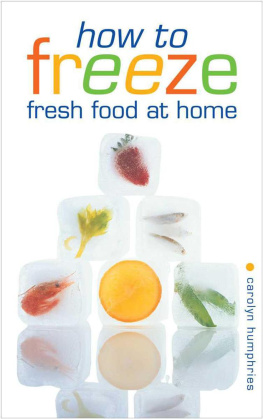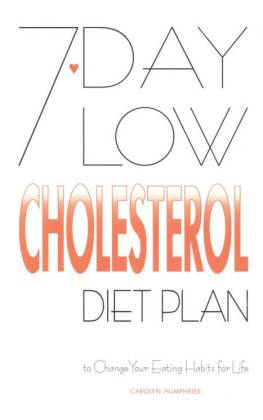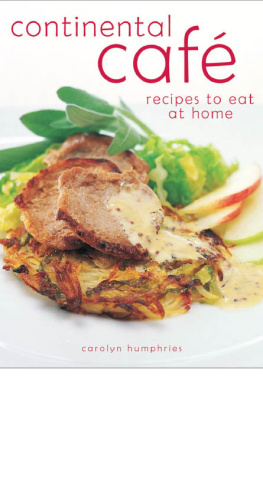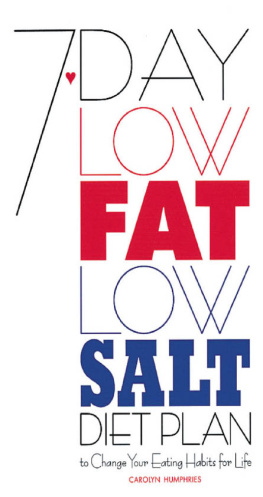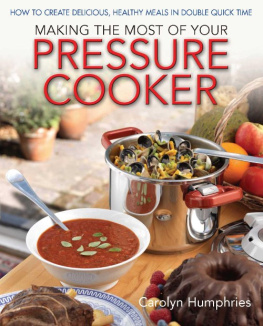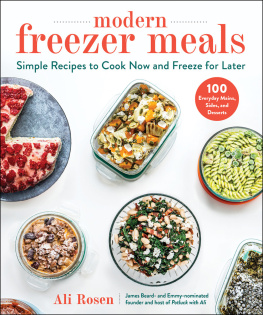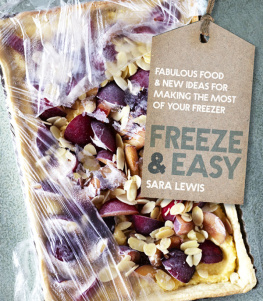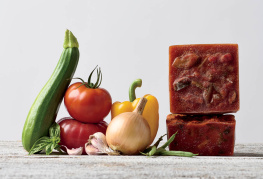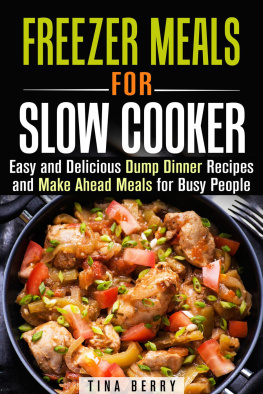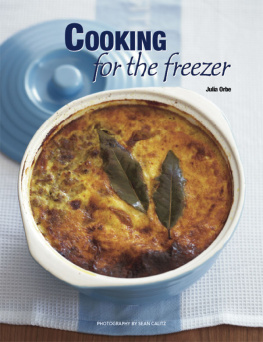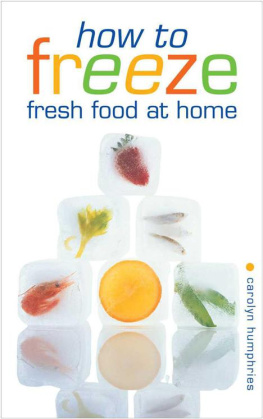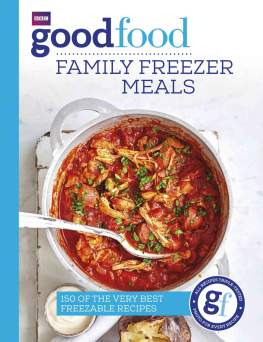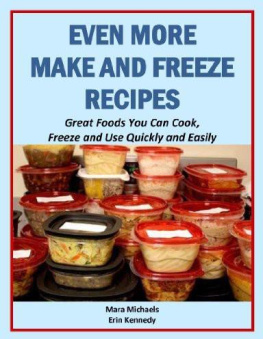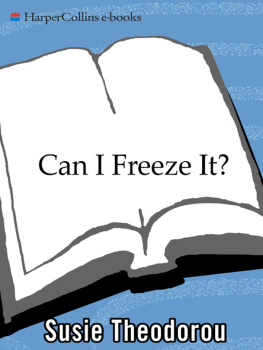Copyright
First published in Great Britain in 2002 by W. Foulsham & Co. Ltd
Copyright 2002 and 2009 W. Foulsham & Co. Ltd
Cover photograph Anthony Blake Photo Library
A CIP record for this book is available from the British Library
The moral right of the author has been asserted
All rights reserved
Epub ISBN 9780572039950
Kindle ISBN 9780572039943
Book ISBN 9780572035891
The Copyright Act prohibits (subject to certain very limited exceptions) the making of copies of any copyright work or of a substantial part of such a work, including the making of copies by photocopying or similar process. Written permission to make a copy or copies must therefore normally be obtained from the publisher in advance. It is advisable also to consult the publisher if in any doubt as to the legality of any copyright which is to be undertaken.
W. Foulsham & Co. Ltd
Capital Point, 33 Bath Road
Slough, Berkshire
SL1 3UF, England
www.foulsham.com
Table of Contents
Introduction
There are lots of books on the subject of freezing, but this one is different. There is no complicated terminology. It tells you exactly what to do and when to do it in an easy-reference format its as simple as that!
I havent wasted space on information on buying a freezer as the chances are you already own one. However, I will offer just two pieces of advice. Get the biggest one you can afford and accommodate you will always wish you had bought a larger one! Also I would not recommend buying a combined fridge/freezer if one part breaks down and is irreparable, you dont want to have to ditch the whole thing, so buy them as two separate units.
Freezer management is crucial, and I offer a foolproof system. Without labels, every piece of frozen food tends to end up looking the same and then its all too easy to thaw stewing beef, thinking its lean, tender rump or to tip frozen crushed strawberries into your Bolognese sauce, thinking they are tomatoes from the previous year!
The second part of this book gives you straightforward information on the preparation and packaging of foods to be frozen. If food is just popped into the freezer, willy-nilly, without any preparation, then it will most certainly spoil, tasting tough and unpleasant on thawing. Packing is important too. Food wont keep in peak condition if you leave it in thin plastic bags from the supermarket; in fact, it will spoil very quickly.
All the methods in this book are simple and its packed with all the basic information you need for successful freezing. You can see exactly what you can and cant freeze, how to do it, and for how long it can be stored. There are tips on batch baking, defrosting and cooking from frozen too. In fact, How to Freeze tells you everything you need to know about freezing!
Freezer Management and Maintenance
A well-stocked freezer is a great asset, saving you time and trouble. But it can only do this if you know whats in it and how to find it instantly. Rummaging around for ages, looking for the right meat amongst all the anonymous packages is crazy. You will be getting frostbite, while the contents of your freezer warm up and the machine burns extra electricity trying to compensate for being open for so long. It need never happen as long as you use a system of labelling.
Labelling
Many so-called experts recommend keeping a book, in which you list the contents of each package and when you freeze it (so youll know when it should be eaten by). Others swear by colour coding. Sadly, in my experience, even the best of us can only keep methods like this up for a week or two, then its just too much hassle looking for the book, or we dont have the right coloured pen and were back to that mountain of UFOs unidentified frozen objects. But, be warned: if you dont have some way of telling whats what, even if youre convinced youll remember what each item is, I guarantee that a month later you wont have a clue!
No-effort marking
The solution, I have discovered, is my system of No-effort Marking. The only vital tools are a marker pen and white sticky labels.
1 Simply write on the left-hand side of the label what the food is, the date and the quantity.
2 Then on the right, mark a large, bold letter (as big as you can get on the label) depicting what sort of food it is. Also, if you have time and space, add any tips of extra flavouring or thickening needed when defrosted.
3 Stick it on the bag or container. The choice of letters you use is up to you. For example:
- M meat and poultry
- F fish
- V vegetables
- Fr fruit
- C cakes
- B bread
- P pastry
- S sauces
- So soups
- D dessert
The letters are self-explanatory but to be on the safe side, keep a list of them written on the inside of the freezer door, or stuck to the front. Also, if possible, keep different foods on different shelves or in different baskets for easier finding fruit and veg in one area, meat and fish in another, bread and cakes in a third, sauces, soups and bits and pieces in another.
Of course, this lovely system does tend to go out of the window when you come home from the supermarket with a load of bargains to be frozen immediately and have space only on one shelf or in one basket! But as long as you use the labelling system and the large letter is easy to see, you should never have a problem. Try and get in the habit of rearranging everything properly as soon as a space becomes available. But dont get obsessive about it!
Colour coding
Colour coding can be used in much the same way, instead of the system of letters. One of the simplest ways is to use different coloured sticky freezer labels. Using an indelible pen, write what the food is, the quantity, the date and any special instructions on the labels as before and stick them on polythene bags or rigid containers.
You could use colours like this:
- Red meat
- Green vegetables
- Blue fish
- Yellow fruit
- White baked good, such as bread, pastry (paste), etc., plus sweet dishes made with chocolate, coffee and so on that dont fall into any of the other categories
Again, you must make sure you write your code on the inside of the freezer door (or stick it to the front) so that you remember it and other members of the family understand it when they are rummaging around.
An alternative to the coloured labels is to use plain labels but with different coloured indelible pens, chinagraph or waxed pencils (if using this method use a black marker for baked goods as white wont show up). You can also use appropriately coloured twist ties for bags, or you can buy different coloured freezer tapes to seal bags and stick on to rigid containers.
A third way is to buy very large different coloured plastic bags. You then put all your meat in the red one, veg in the green one and so on. The only thing you MUST remember is to put them in the right bags. But even if you dont do it all the time, at least some of your foods will be quickly identifiable!
You can also use small coloured plastic bags and rigid containers with different coloured lids to match your code, but they are more expensive than ordinary freezer bags and containers. There is also the danger that you will run out of the colour you want to use. Then youll end up putting the food in the wrong coloured bag or box and the system will be ruined. So perhaps its best to stick to my No-effort Marking.

